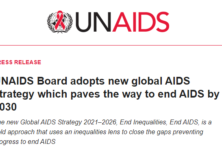Since the end of 2016, several EU countries have been reporting an increase of hepatitis A cases, both in the general population and in specific risk groups. The aim of this epidemiological update is to provide an overview of the current status, using online publicly available information from health authorities in the 28 EU countries. This overview is not exhaustive.
Since the beginning of 2017, 14 countries, i.e. Austria, the Czech Republic, Denmark, Finland, France, Germany, Ireland, Latvia, Lithuania, the Netherlands, Poland, Portugal, Slovenia and Spain reported 5 983 cases of hepatitis A according to online publicly available information. This is higher than the average annual number of cases reported by this group of countries to The European Surveillance System (TESSy) between 2007 and 2016 (2 506 cases).
As indicated in Table 1, 13 countries, i.e. Austria, Finland, France, Germany, Ireland, Italy, Latvia, Lithuania, the Netherlands, Poland, Portugal, Slovenia and Spain, have reported an increase of hepatitis A cases since the beginning of the year compared with 2016 data for the same time period, or the entire year of 2016. Two countries, the Czech Republic and Denmark, did not report an increase compared to the previous time period. Specific country information from TESSy in 2016 is not shown in this report because it is still under validation.
Table 1. Online publicly available information from health authorities in 15 EU countries on hepatitis A cases in 2016 and 2017
| Country | Date of report 2017 | Number of cases from Jan 2017 to date of report | Number of cases for the same time period in 2016 | Number of cases for 2016 | Year-on-year ratio, 2016, 2017 |
|---|---|---|---|---|---|
| Austria | 30 May | 103 | 32 | – | 3.2 |
| Czech Republic | 30 Jul | 271 | 317 | – | 0.9 |
| Denmark | 1 Aug | 18 | 19 | – | 0.9 |
| Finland | 31 Jul | 17 | – | 6 | 2.8 |
| France | 30 Jun | 1 149 | – | 693 | 1.7 |
| Germany | 14 Jul | 589 | 430 | – | 1.4 |
| Ireland | 28 Jul | 33 | 15 | – | 2.2 |
| Italy* | 1 Apr | 1 410* | 142** | – | 9.9 |
| Latvia | 14 Jul | 10 | 4 | – | 2.5 |
| Lithuania | 1 Aug | 27 | 2 | – | 13.5 |
| Netherlands | 21 May | 114 | 20 | – | 5.7 |
| Poland | 15 Jul | 572 | 20 | – | 28.6 |
| Portugal | 23 Jul | 425 | – | 53 | 8.0 |
| Slovenia | 30 Jun | 16 | 6 | – | 2.7 |
| Spain | 2 Jul | 2 639 | – | 325 | 8.1 |
* Italy reported cases for August 2016 – April 2017; no specific data for 2017 were found.
** Cases for August 2015 – April 2016
In addition, Bulgaria reported more than 1 000 viral hepatitis cases, and the United Kingdom reported 377 acute viral hepatitis cases in 2017 (online 2016 data were not found). No specific data for hepatitis A were found for these two countries.
In Portugal , 88 % of the 425 cases reported are men. More than half (52%) of the cases were acquired through sexual contact; three quarters (318) occurred in the region of Lisbon and Tagus Valley. The same virus strain was identified in 204 cases.
In Spain , reported hepatitis A cases have been on the increase since mid-2016. The majority of the cases are men between the ages of 18 and 64 years.
In Italy , 85.9% of the 1 410 reported cases are men, and 61% are men who have sex with men (MSM). This represents a significant increase compared with 2015 when MSM accounted for 8% of the cases. Among the reported cases, 154 were confirmed to belong to the three clusters reported in the EU.
Between 1 June 2016 and 26 June 2017, 16 EU countries (Austria, Belgium, Denmark, Finland, France, Germany, Greece, Ireland, Italy, the Netherlands, Norway, Portugal, Slovenia, Spain, Sweden and the United Kingdom) reported 1 500 HAV (hepatitis A virus) genotype IA-confirmed cases, belonging to three separate clusters (based on genetic sequencing of HAV), predominantly among adult MSM. In addition to the outbreak confirmed cases, 2 660 hepatitis A cases were reported, probably or suspected to be associated with this outbreak. No deaths have been reported among confirmed cases.
This multi-country outbreak may explain the increase in the total number of hepatitis A cases reported in 2017 compared with the case numbers from previous years as reported by the 14 countries from which data were available (Figure 1). In 2008 and 2009, hepatitis A outbreaks affecting MSM were identified in several EU countries.
Figure 1. Distribution of reported hepatitis A cases, by year of report, 2007–2017, in 14 EU/EEA countries with available data*

Note: Data for 2017 up to the period indicated in Table 1. Data from 2007 to 2016 extracted from TESSy.
* Austria, the Czech Republic, Denmark, Finland, France, Germany, Ireland, Latvia, Lithuania, the Netherlands, Poland, Portugal, Slovenia and Spain. Italy was excluded because no specific data for 2017 were found.
For six EU countries – Austria, Germany, Denmark, Finland, France and Portugal – data on gender distribution in 2017 were available: the reported number of male cases in 2017 exceeds the number of male cases reported for each of the previous years (Figure 2).
Figure 2. Gender distribution of reported cases in Austria, Germany, Denmark, Finland, France and Portugal, 2007–2017

Note: Data for 2017 up to the period indicated in Table 1. Data from 2007 to 2016 extracted from TESSy.
The main prevention measure in the context of the current outbreaks is hepatitis A vaccination of MSM. It is suggested that vaccination be promoted and offered to MSM attending Pride festivals this summer, where the likelihood of contact with hepatitis A-infected individuals could be elevated. However, limited hepatitis A vaccine availability in some countries may have an impact on the implementation of these measures.
Hepatitis A vaccine availability in the EU is currently limited, with some countries having reported shortages (e.g. Austria, Denmark, Italy, Portugal, Spain and Sweden). Other countries, such as the Czech Republic, Estonia, Finland, Germany, Ireland, Luxembourg and Slovenia, have reported no shortages.
The conclusions and options for response of the ECDC rapid risk assessment entitled ‘Hepatitis A outbreak in the EU/EEA mostly affecting men who have sex with men – Third update, 28 June 2017’, remain valid.
Actions
ECDC monitors and reassess this event regularly.


 ПОИСК ПО САЙТУ
ПОИСК ПО САЙТУ  поиск по ресурсному центру
поиск по ресурсному центру 



